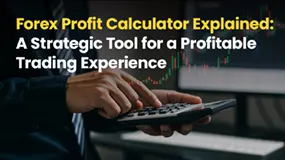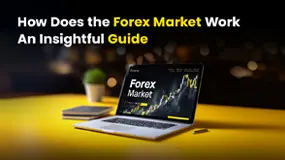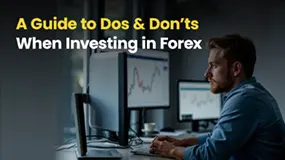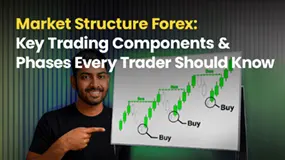Abstract:With the expansion of the global economy, currency demand among different countries has gradually expanded, and foreign exchange trading has become the financial market with the largest trading volume in the world. Forex trading is the exchange of one country's currency with another country's currency. Unlike other financial markets, the forex market has no specific location or central exchange. Instead, it operates through an electronic network of banks, businesses, and individuals. Foreign exchange trading is not only a tool for users to hedge the risk of future exchange rate fluctuations, but also a method for investors to make profits from currency investments.
What is Forex Trading?
With the expansion of the global economy, currency demand among different countries has gradually expanded, and foreign exchange trading has become the financial market with the largest trading volume in the world. Forex trading is the exchange of one country's currency with another country's currency. Unlike other financial markets, the forex market has no specific location or central exchange. Instead, it operates through an electronic network of banks, businesses, and individuals. Foreign exchange trading is not only a tool for users to hedge the risk of future exchange rate fluctuations, but also a method for investors to make profits from currency investments.
Basic Concepts of Foreign Exchange Trading
Trading Strategies for Beginners
The forex market is the largest financial market by trading volume globally and is highly mature. There are many different trading strategies in forex trading; some are straightforward and easy to understand, while others are more complex and not suitable for novice traders. The simpler the strategy, the clearer its underlying logic. Only by mastering the underlying logic can one develop more complex trading strategies. Next, I will introduce some simple trading strategies to novice traders.
Technical Indicators New Traders Must Know
Some Useful Trading Strategies for Beginners
Trade With the Trend
Trend trading strategies mainly involve identifying short-term trends and combining them with technical indicators to enter trades. In an upward trend, one should only go long, and in a downward trend, one should only go short. Moving averages can help investors identify future price trends. The chart below shows the EMA9 and EMA21 moving averages, where we can see that the price trend is upward. RSI divergence can help investors find suitable entry points. The chart below shows the EUR/USD exchange rate. We can see that the price at point B is lower than the price at point A, but the corresponding RSI value at point D is higher than the RSI value at point C. Therefore, we identify that RSI divergence has occurred. Point B is a high risk-reward entry point, and combining this with the moving averages, we can see that the future trend is upward. Thus, buying at point B is a long position that is likely to yield good returns.
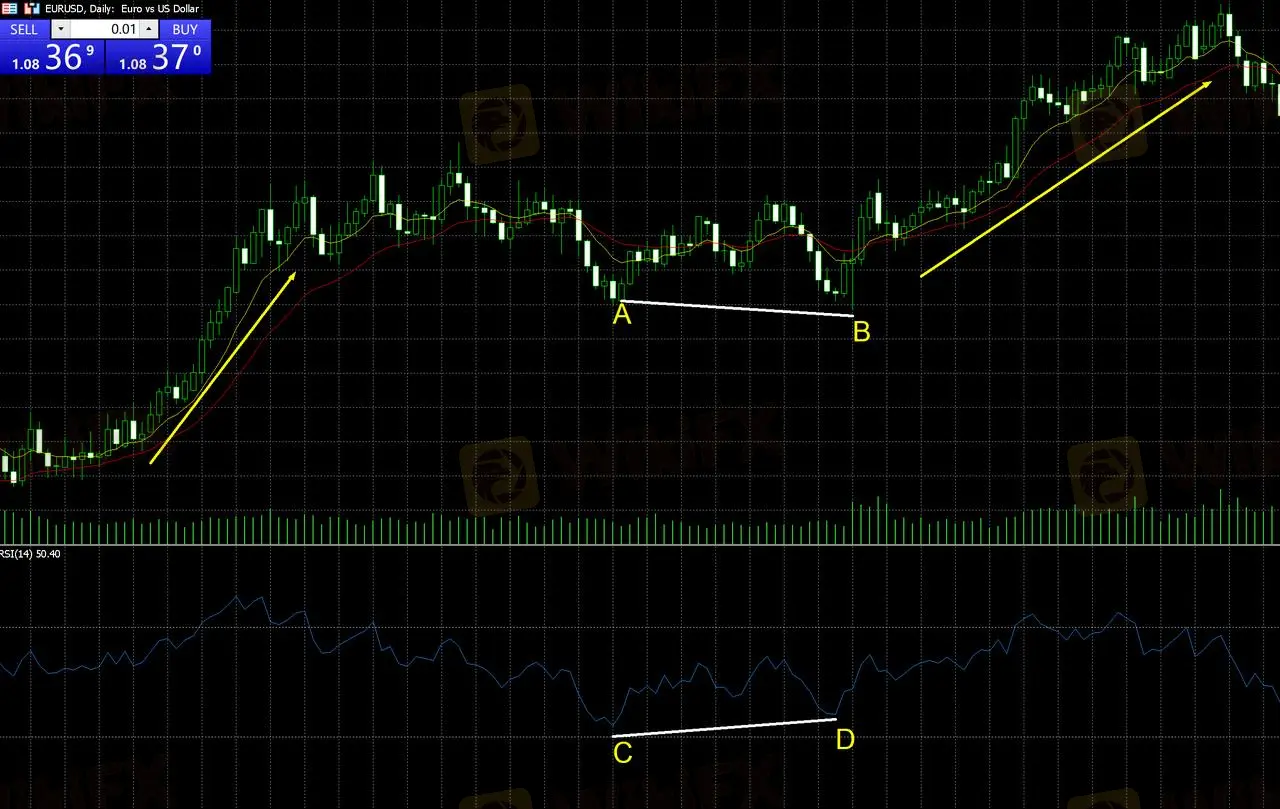
Range Trading Strategy
Range Trading is one of the most suitable strategies for novice traders. Range trading involves the price moving between two defined price levels, oscillating up and down around this range. Traders enter long and short trades within this range. This strategy is suitable for both short-term and long-term traders. The chart below shows the EUR/USD exchange rate. According to the range trading strategy, we can enter short trades when the price is at positions 1, 2, and 3, and enter long trades when the price reaches positions 4 and 5.

Breakout Trading Strategy
A breakout strategy involves entering a trade in the direction of the breakout after the price suddenly accelerates and breaks through support or resistance levels following a period of range-bound movement. Breakout trading is one of the most commonly used methods by forex traders. Its simple and effective strategy is suitable for novice traders, and its high volatility provides opportunities for intraday traders. The chart below shows the EUR/USD exchange rate. We can see that the exchange rate oscillates between the range AB and then suddenly breaks downward at point 1. At this point, we enter a short position following the breakout.

Take Profit And Stop Loss Settings
Evaluating whether a trader is competent is not based on their ability to make a profit in trades, but rather on their risk management skills. Every successful trader has a strict habit of setting stop-loss and take-profit levels. The market can always present unexpected situations; if you believe that stop-losses are detrimental and either dont set them or frequently fail to execute them, eventually, you might face a catastrophic loss, regardless of how many times you manage to escape. However, unreasonable stop-loss settings or incorrect entry points can lead to frequent stop-outs. Novice traders can adopt a trailing stop-loss strategy. When you decide to enter a trade, you should set the stop-loss level in advance. Once the price touches this level, it must be executed to prevent massive losses from the price moving in an unfavorable direction. Take-profit levels can be adjusted flexibly with price changes. For example, if you achieve a 20% gain, you can set the take-profit level to 10% of the gain. If the price continues to rise and the gain reaches 40%, you can adjust the take-profit level to 20%.
How Should Beginners Choose A Forex Broker?
In recent years, problems with forex deposits and withdrawals have become increasingly common. The most important factor that every trader needs to consider before trading is how to choose a broker. Unlike the stock market, which has a centralized trading venue, forex trading relies on brokers to mediate transactions between buyers and sellers. Given the current mixed quality of the forex brokerage market, it is crucial to select a reliable forex broker. Otherwise, our trading capital could be at risk. Below, we will explain how to choose a reliable forex broker.
Choose a Broker With Reliable Supervision
When choosing a broker, traders should first consider those regulated by authoritative regulatory agencies. A broker that can obtain a forex regulatory license usually has a certain level of strength, and the regulatory compensation fund can enhance the security of traders' funds. Some of the authoritative regulatory agencies include the NFA (National Futures Association in the US), the FCA (Financial Conduct Authority in the UK), ASIC (Australian Securities and Investments Commission), FINMA (Swiss Financial Market Supervisory Authority), and the FSA (Financial Services Agency of Japan). New traders can check relevant regulatory information on Wikifx and select a professional and qualified broker for forex trading.
Use Leverage To Determine Compliance
Different brokers offer varying levels of leverage, with some platforms providing 50x leverage and others offering up to 1000x leverage. Some brokers use high leverage in their marketing to attract investors, which requires forex traders to be particularly cautious. International regulatory agencies typically set limits on product leverage ratios, and brokers must comply with these regulations to obtain a regulatory license. Therefore, new traders should pay attention to whether the leverage offered by a broker aligns with the requirements of the regulatory agency. If the leverage provided does not match the regulatory standards, the platform is likely to be problematic.
Choose Lower Transaction Fees
An important factor affecting long-term investor returns is trading costs. Different brokers charge varying fees and commissions, typically including spreads, transaction fees, and account management fees. Investors should carefully compare the fee structures of brokers to ensure that their fees are reasonable and transparent, with no hidden charges. However, investors should not choose brokers solely based on significantly lower fees compared to the market average, as brokers need to make a profit and excessively low fees may compromise the platform's operations. Therefore, it's important to select a broker with a more reasonable fee structure. Additionally, reputable platforms usually disclose their fee structures publicly. If trading costs cannot be found, be cautious about the platform's compliance.
Provid the Complete Products
Whether a broker can provide a wide range of trading products is crucial to an investor. Rich investment products can reduce investors' risks. Formal broker will provide professional trading tools and technologies to create a stable and reliable trading environment, which will improve investors' trading winning rate. Brokers should provide software that supports different types of order execution and real-time market quotation, and should provide a fast order execution speed when prices fluctuate violently. If the price of a currency pair fluctuates greatly, access to the trading platform is delayed or orders cannot be placed, which will result in heavy losses for investors.
Professional Customer Service Team And Services
Forex trading is conducted 24 hours a day, and when we trade on a broker's platform, issues can arise for which we will want timely customer service. Professional and qualified brokers offer 24-hour customer service in multiple languages, though we should be aware that customer service only provides assistance and not trading advice. When choosing a broker, we can first contact the broker's customer service team to understand their actual service status, response speed, and professional competence, ensuring that we receive effective support when trading on the broker's platform in the future.
Conclusion
The current foreign exchange market has matured, and many novice traders are attracted by the huge profits. As a novice trader, you must not operate blindly. You must form your own investment system and constantly learn and improve. You cannot expect huge returns in the short term. Only by continuing to learn for a long time can we survive in this ever-changing market.
FAQ
Can a strategy ensure long-term profitability?
No. The forex market is highly dynamic, and different market conditions require different trading strategies. No single strategy can adapt to all market scenarios. We must continuously learn new trading strategies to achieve profits in this ever-changing market.
What is the significance of forex bidirectional trading?
Forex bidirectional trading refers to the ability for investors to both go long and go short. Regardless of whether the market is rising or falling in the short term, traders can enter trades, providing greater profit potential.
Is high leverage in forex trading inherently high risk?
Forex margin trading uses leverage, allowing traders to amplify their funds and rapidly accumulate wealth through correct trading methods. Typically, the level of risk depends on the actual leverage used. For instance, using 1% of funds with 50x leverage is riskier than using 100% of funds with 2x leverage. While trading leverage can increase our capital efficiency, improper leverage strategies can lead to greater losses.

















